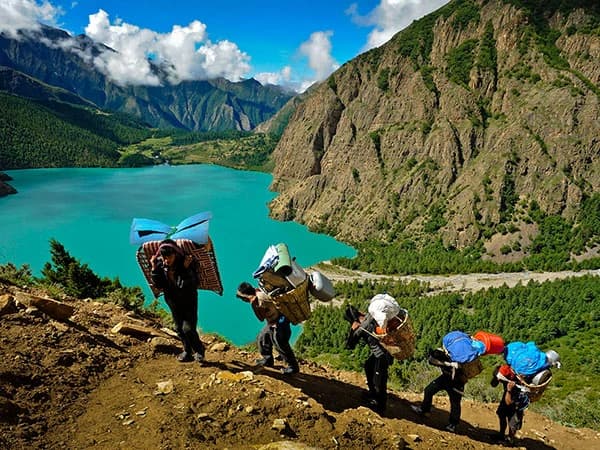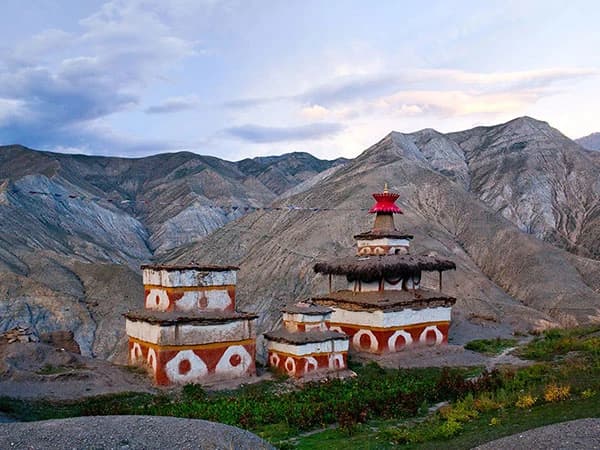Dolpo covers 15% of the area of Nepal and has been arbitrarily divided into a Lower (Outer) and Upper (Inner) region. It is the highest inhabited land in Nepal, hidden behind high passes from the south and lying northwest of Dhaulagiri and the Kali Gandaki gorge. Geographically it is a southern extension of Tibet, within the borders of Nepal: a vast arid region of brown ridges in the rain-shadow of the monsoon. The Shey-Phoksundo National Park is the country’s largest conservation area: opened to trekking in the 1990’s.
Dolpo Region
The region sustains an abundance of wildlife including Himalayan blue sheep, musk deer, jackals, and snow leopards. Birds include Himalayan griffons, snow pigeons and several species of pheasant (including Nepal’s national bird: the impheyan pheasant).
The Dolpopa are a hardy people of Tibetan origin. They are believed to have migrated into this region from about the 6th C. Their language and customs are unique to the region. Their religion still contains ancient shamanistic practices of Bon mysticism, amalgamated with Buddhism. Most monasteries in Dolpo are either Bon or Kagyupa (famous for its scholars Tilopa, Marpa, and Milarepa) – although there seems to be a trend to convert to Nyingmapa: the oldest sect founded by Guru Rinpoche. The Do Tarap region has numerous Bon monasteries.


